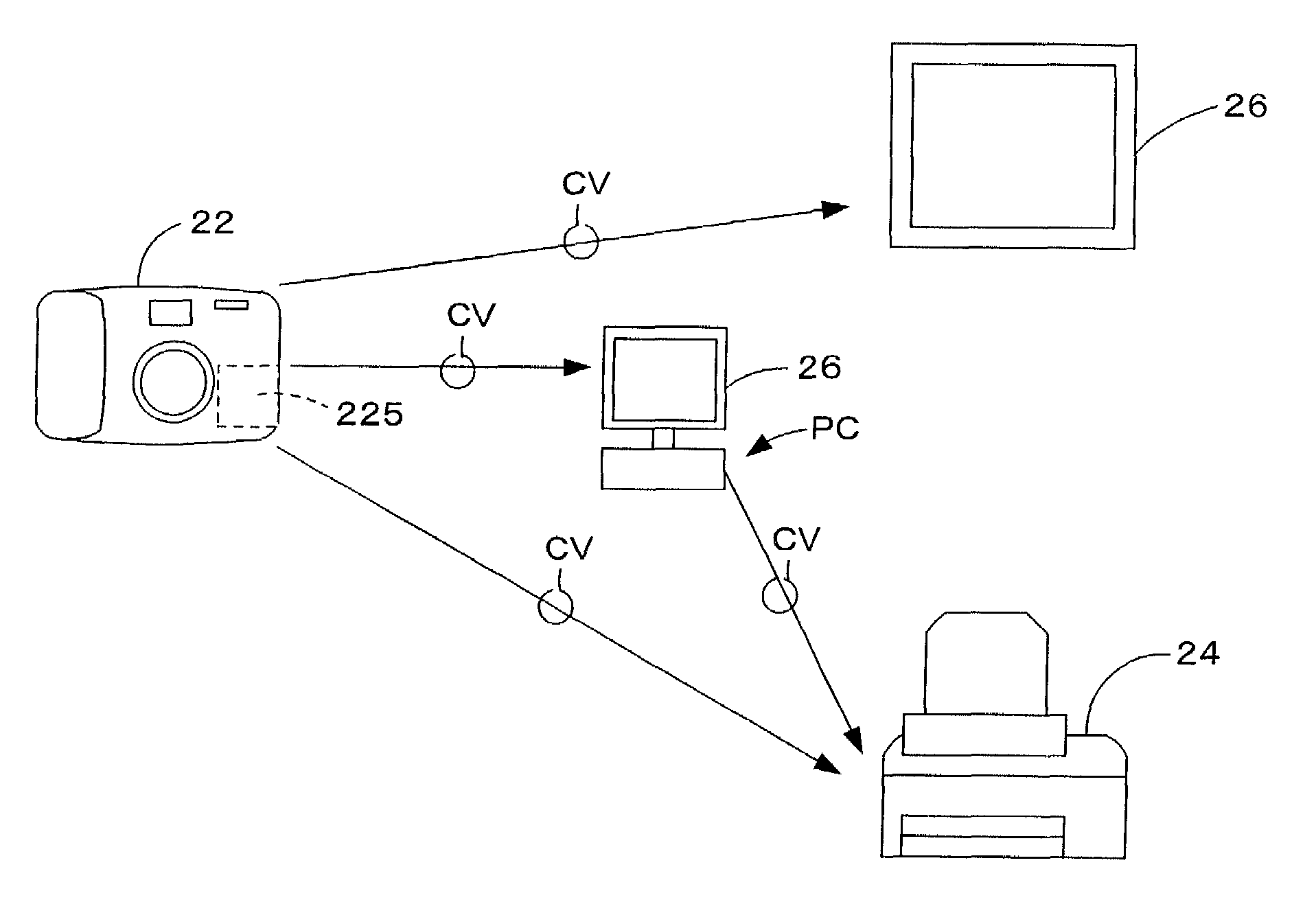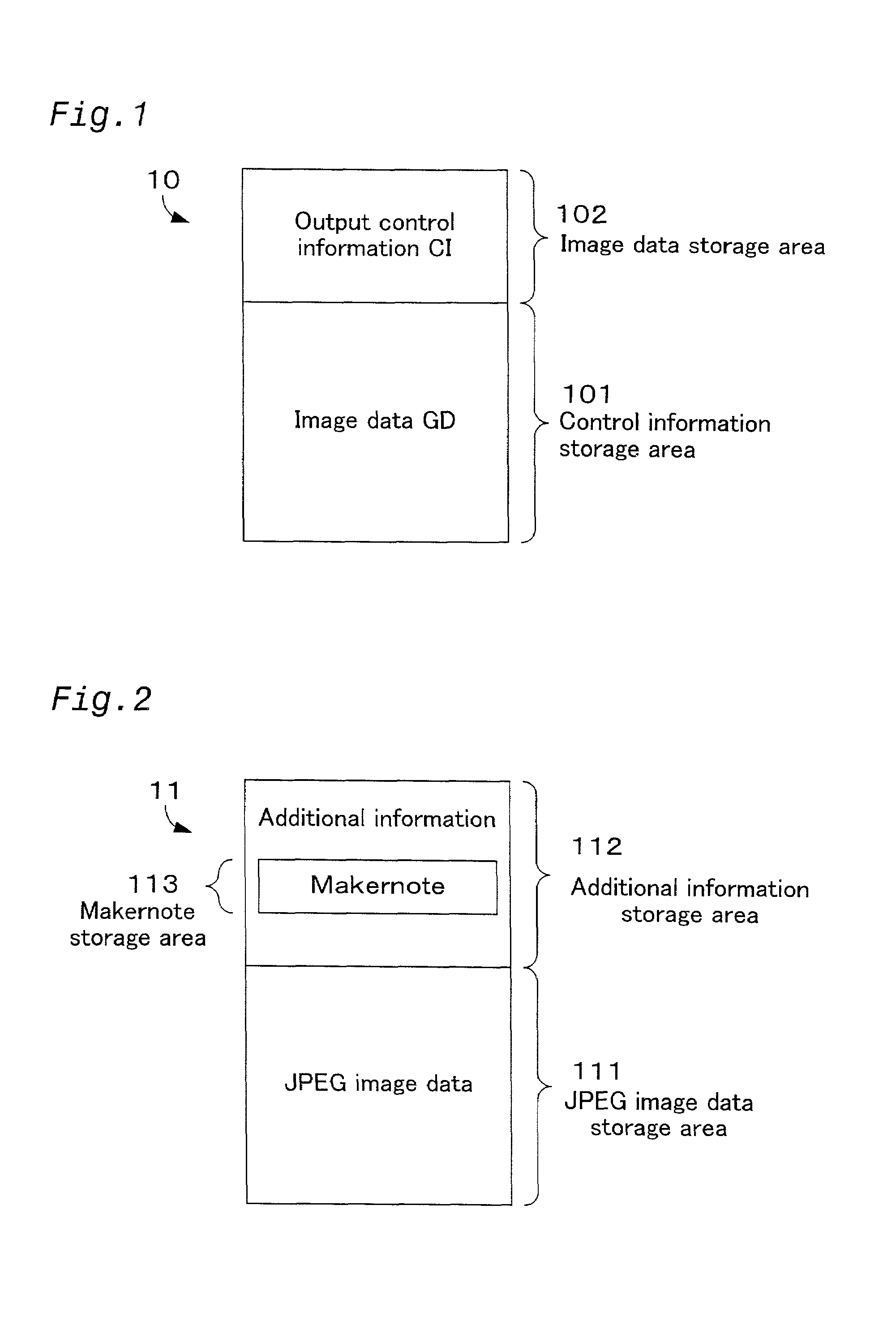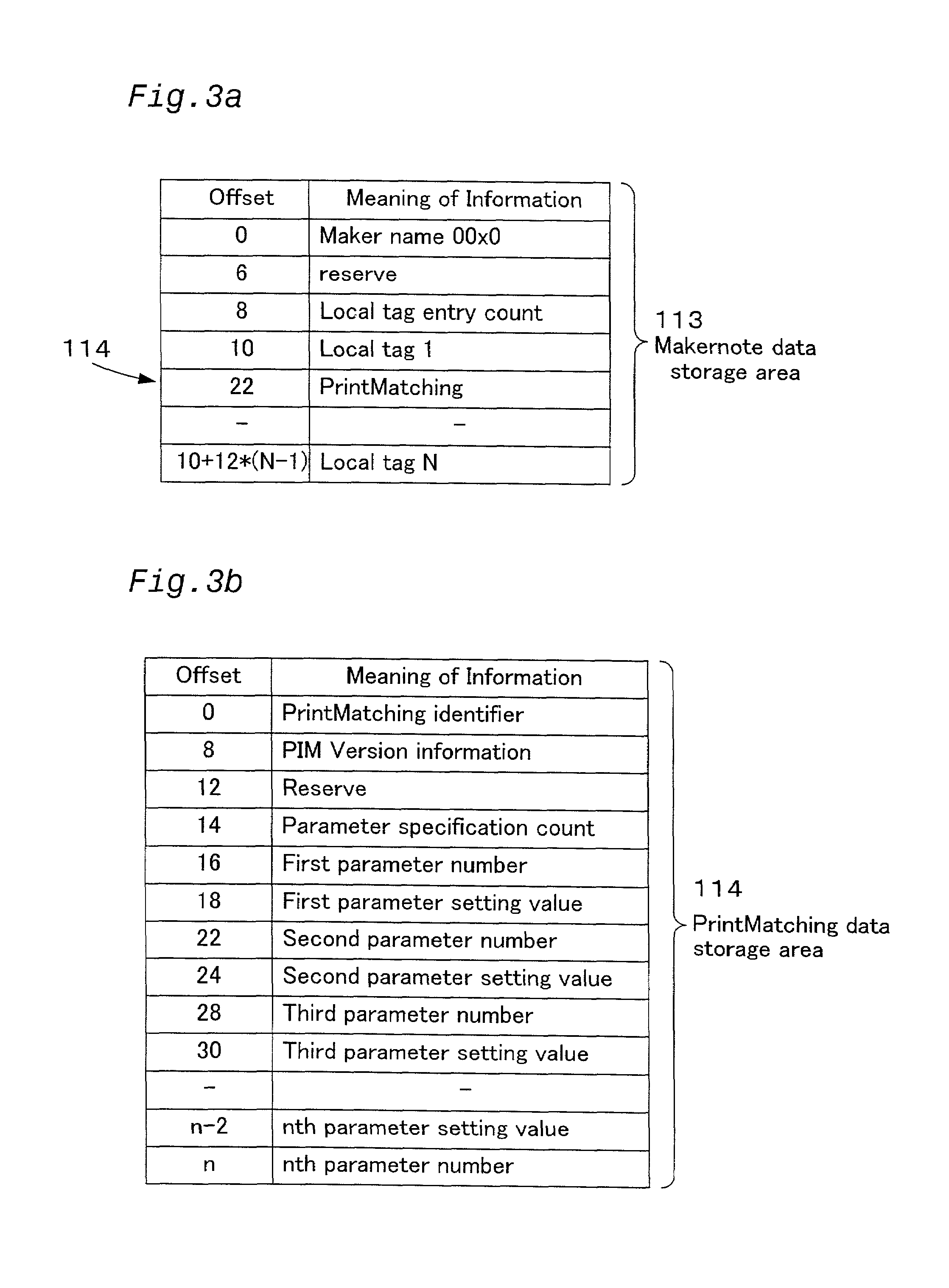Apparatus, method, signal and computer program product configured to provide output image adjustment of an image file
a technology of image file and output image, applied in the direction of digital output to print units, instruments, television systems, etc., can solve the problems of not being able to match the image output of the photographer with what the photographer actually intended to capture, no process or mechanism that allows data to be transferred and processed in a way
- Summary
- Abstract
- Description
- Claims
- Application Information
AI Technical Summary
Benefits of technology
Problems solved by technology
Method used
Image
Examples
working examples
F. Other Working Examples
[0127]For both the aforementioned third and fourth working examples of image processing, printer 24 was used as the output device, but it is also possible to use a display device such as a CRT, LCD, or projector as the output device. In this case, depending on the display device used as the output device, an image processing program (display driver) that executes image processing like that explained using FIGS. 9 and 10, for example, is executed. Or, when a CRT or the like is functioning as the display device of a computer, an image processing program is executed on the computer side. However, the finally output image data has an RGB color space rather than a CMYK color space.
[0128]In this case, as with being able to specify printing results via printer 24 using image file GF, it is possible to specify display results for the display device such as a CRT using image file GF. Therefore, by giving suitable parameters for the display device such as a CRT to out...
PUM
 Login to View More
Login to View More Abstract
Description
Claims
Application Information
 Login to View More
Login to View More - R&D
- Intellectual Property
- Life Sciences
- Materials
- Tech Scout
- Unparalleled Data Quality
- Higher Quality Content
- 60% Fewer Hallucinations
Browse by: Latest US Patents, China's latest patents, Technical Efficacy Thesaurus, Application Domain, Technology Topic, Popular Technical Reports.
© 2025 PatSnap. All rights reserved.Legal|Privacy policy|Modern Slavery Act Transparency Statement|Sitemap|About US| Contact US: help@patsnap.com



